I wanted to travel on uncrowded roads with jaw-dropping scenery and a heart-stopping ride in Himachal Pradesh. What’s a better destination than a village in the least densely populated district of India, according to the Indian Census 2011.
Table of Content:
- Why did I choose Sissu Village as my next destination in Himachal Pradesh?
- Getting to Sissu Village through the Atal Tunnel
- Witty Road Signs by the BRO on Roads to Lahaul Valley
- On Lahaul Valley Roads: When the Journey is Truly More Beautiful Than the Destination
- River Chandra – The Most Sparkling and Chilly Queen of Lahaul Valley
- Sissu: A Village Bounded by Scenic Poplar Trees
- Who Should Avoid Traveling to Sissu Village in the Lahaul Valley?
- Essential Travel Tips for Visiting Sissu Village in Himachal Pradesh
- Ready to fall in love with Sissu Village?
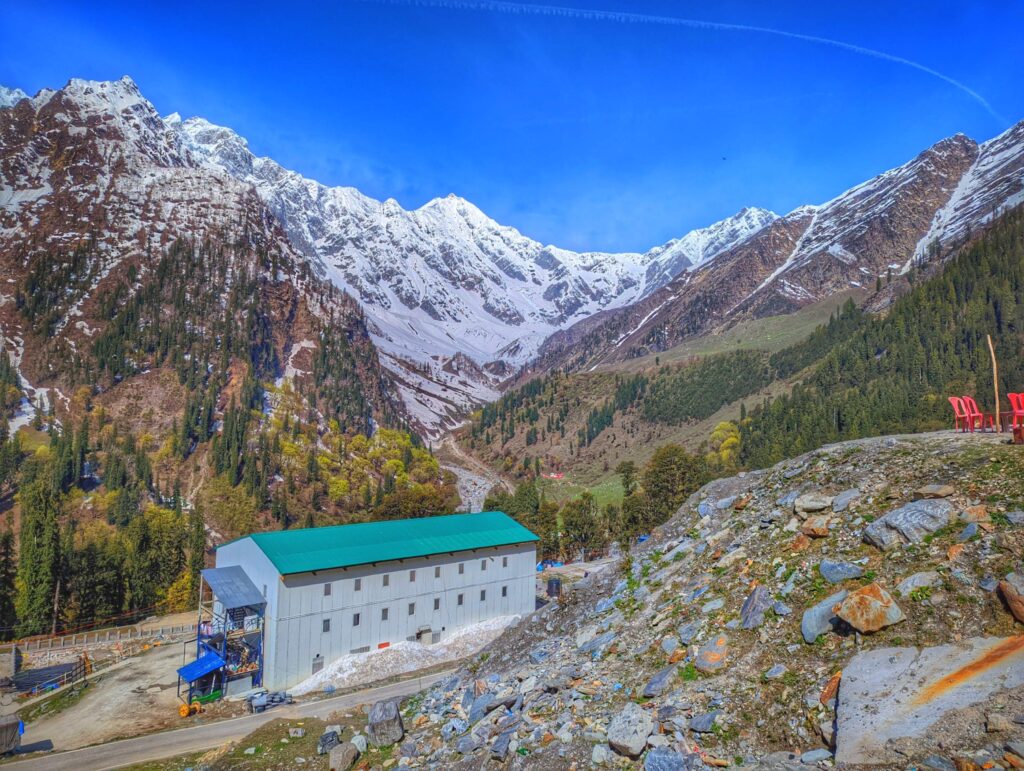
Why did I choose Sissu Village as my next destination in Himachal Pradesh?
I always keep at least one buffer day in my travel itinerary, just in case of any unexpected exigencies. I had planned a trip to Sainj Valley and Tirthan Valley, and fortunately, everything went so smoothly that we didn’t even need to use our buffer day.
As the trip was about to end, I decided to utilize the buffer day exploring Sissu village, the first village in Lahaul Valley from the Atal Tunnel side.
Another reason I was drawn to Lahaul Valley was its unique landscape. I was looking for a change from the lush green meadows of Sainj and Tirthan Valleys, and Lahaul’s rugged terrain offered the perfect contrast.
Getting to Sissu Village through the Atal Tunnel

The Atal Tunnel can get extremely crowded with heavy traffic jams on weekends and popular holidays; however, as we were traveling on a weekday, there was absolutely no crowd. The Atal Tunnel was completely empty.
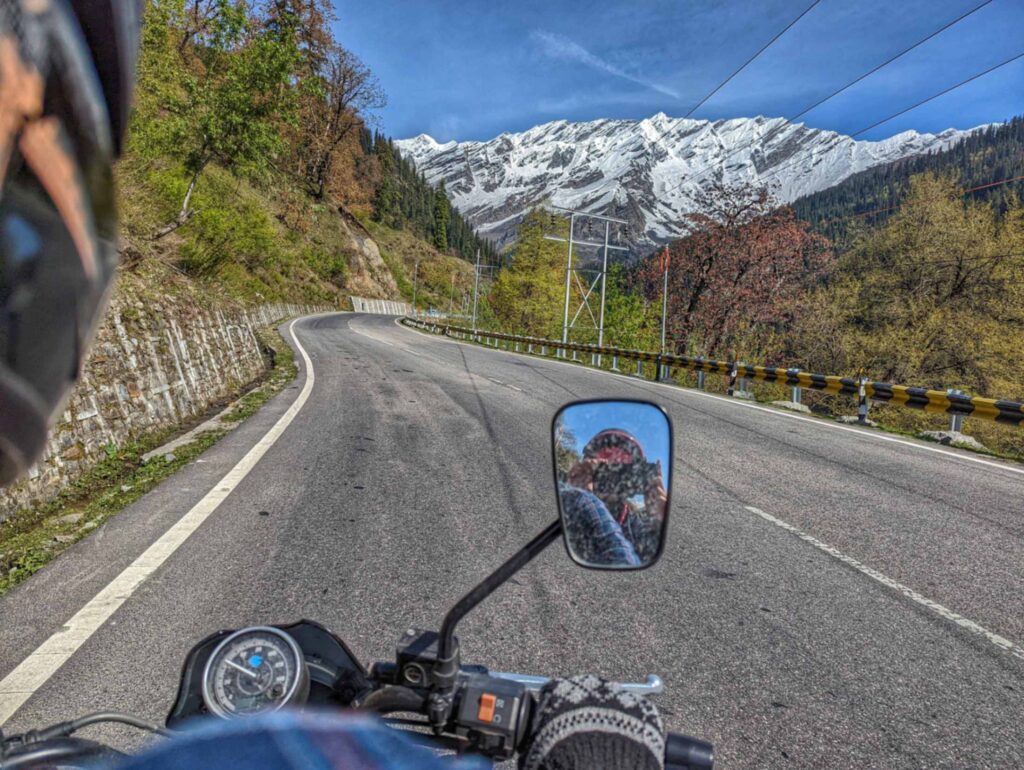
The Atal Tunnel is a 9-km-long magic gate. Literally a magic gate! As I entered the tunnel, I was in the lush green valley of Kullu, but the moment I emerged, I was in a completely different, barren world—the snowy landscape of Lahaul Valley.

At the exit of the Atal Tunnel, we encounter two roads: the road on the right goes to Spiti, and the road on the left goes to Leh. To reach Sissu, we must take the road to the left, heading toward Leh.
Witty Road Signs by the BRO on Roads
These scenic roads are maintained by the Border Roads Organisation (BRO). The BRO is a road construction and maintenance force in India, primarily tasked with developing and managing infrastructure in challenging border areas, especially in the Himalayas and northeastern states.
One thing you can’t miss on roads maintained by the BRO is the witty road signs:
1. “Better Late than Never – Drive Slow, Arrive Safe.”
2. “Be Gentle on My Curves.”
3. “If You Are Married, Divorce Speed.”
4. “Roads are Hilly, Don’t Drive Silly!”
5. “Don’t be Gama in the Land of Lama!”
6. “This is a Highway, Not a Runway.”
7. “After Whisky, Driving Risky.”
These signs are not only memorable but also keep travelers cautious on these treacherous high-altitude routes in India’s border regions.
On Lahaul Valley Roads: When the Journey is Truly More Beautiful Than the Destination
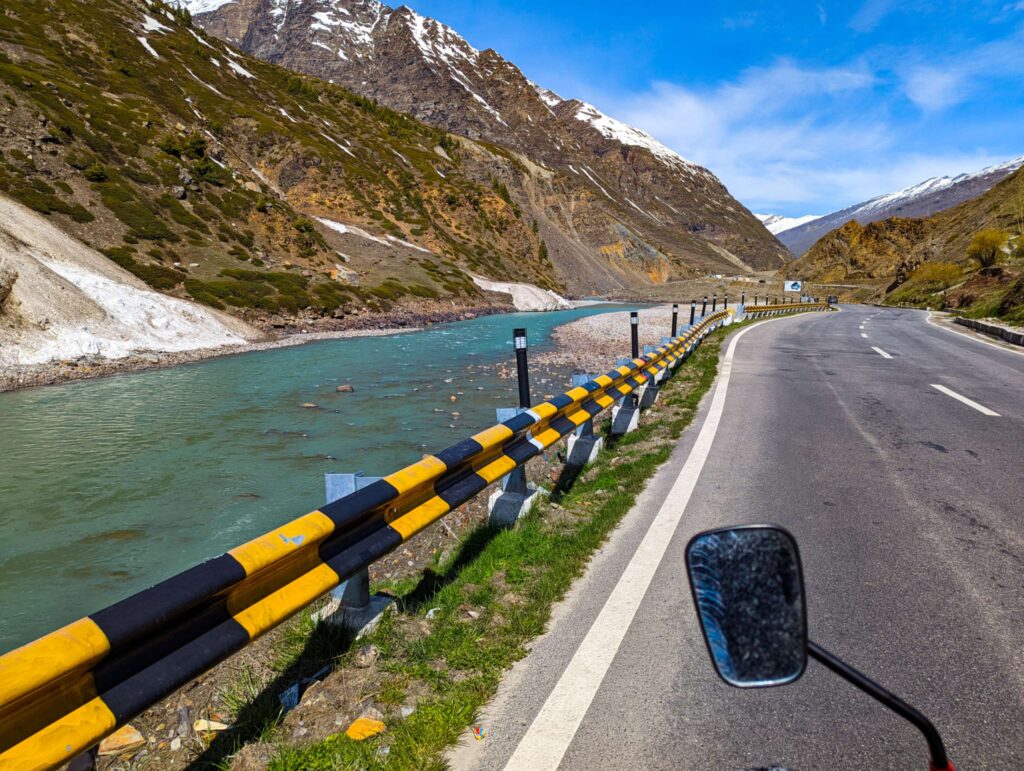
After every few kilometers, I’d stop, look around, and think, “Awesome! Is this even real?” Then, just as I’d convinced myself to get back on the road, the next turn would offer another scene more jaw-dropping than the last.
It’s in these moments on these roads—feeling the wind, absorbing the silence—that the journey itself becomes the adventure. By the time I actually arrived, I couldn’t even remember what the destination was supposed to be! It was these incredible roads that had stolen the show.

River Chandra – The Most Sparkling and Chilly Queen of Lahaul Valley

In the rugged, wind-whipped mountains of Lahaul, the gushing blue Chandra River is the ultimate star. She cuts the Lahaul Valley as smoothly as a knife slices butter.
One look into that icy water, and you’ll see straight down to the riverbed as if nature itself is showing off. You could call it “crystal-clear,” but honestly, it’s even more transparent than the intentions of a three-year-old eyeing a candy jar. But don’t be fooled by the frosty looks; dip a toe in, and you’ll realize that the Chandra is as cold as it is clear. It’s like being slapped with a snowball.
The Chandra’s path isn’t a calm flow through gentle plains. Oh, no. This river has attitude! She bounces over boulders gracefully, rushing along as if she’s a bit late for a very important meeting with her sister, the Bhaga River, at Tandi.

Sissu: A Village Bounded by Scenic Poplar Trees
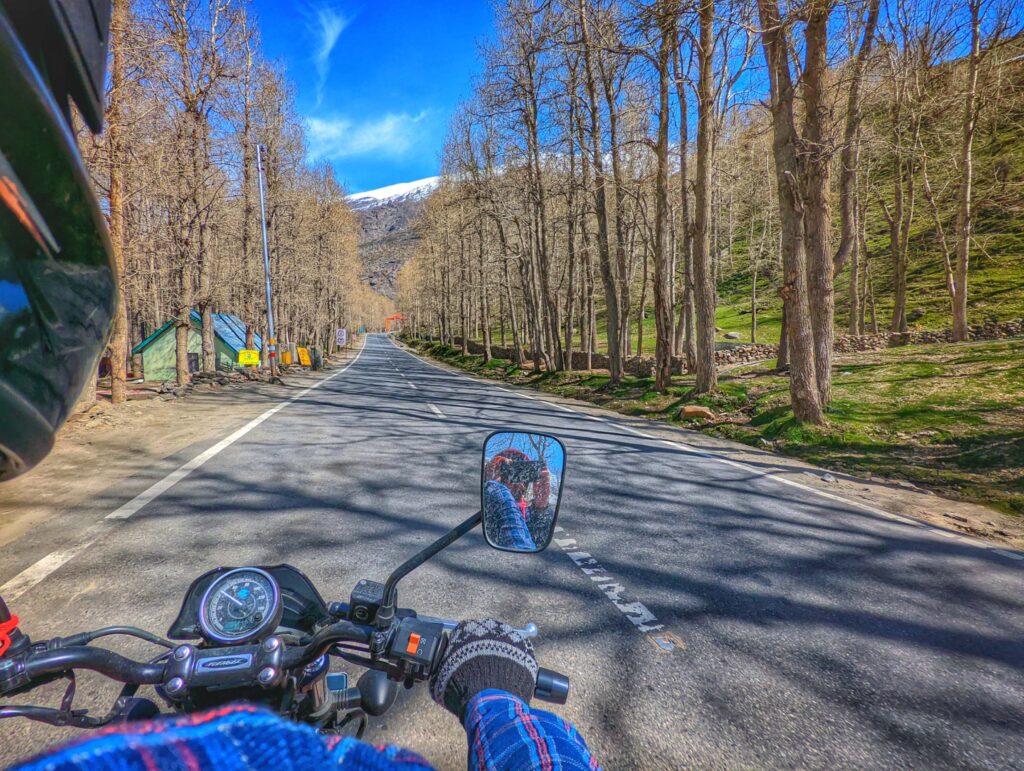
The first thing that caught my eye as I stepped into Sissu Village was the poplar trees. This place isn’t your typical bustling hill station with flashy hotels and tourists yelling, “Selfie!” No, Sissu is quiet, remote, and utterly charming. Sissu Lake is the first to greet you—a little slice of serenity framed by snow-covered mountains that seem like they’re posing just for you. And the water? Crystal-clear and unbelievably still. It’s surreal.
Another thing you can’t miss is “Sissu Waterfall.” This waterfall isn’t just beautiful—it’s completely cinematic.
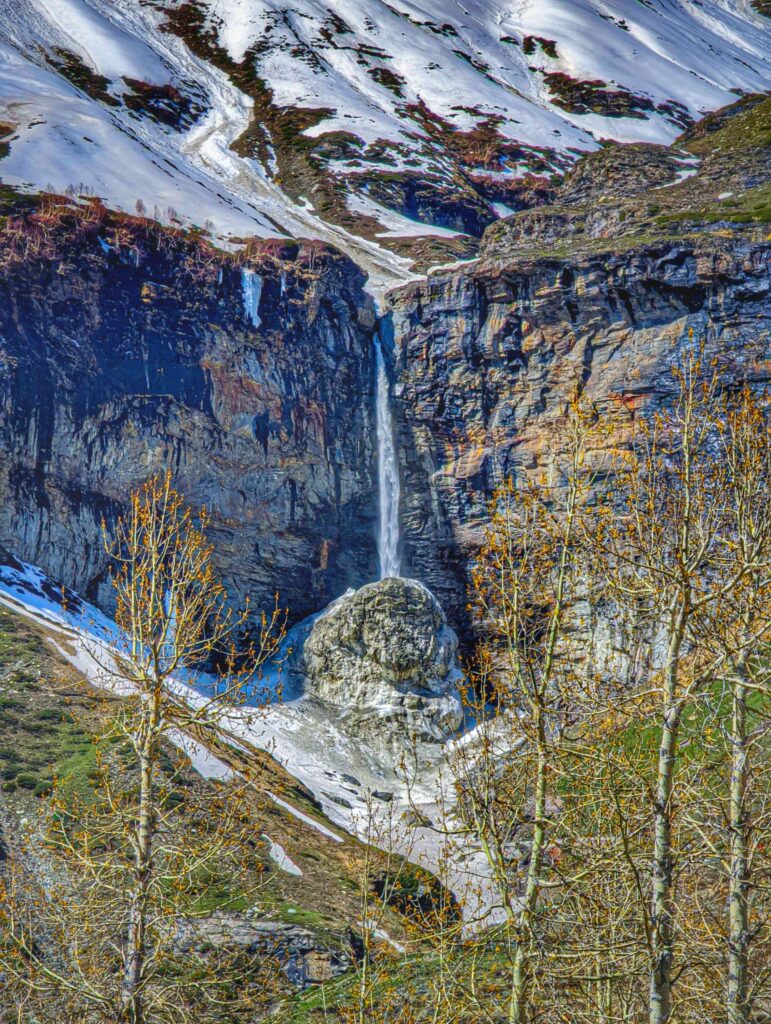
Who Should Avoid Traveling to Sissu Village?
After the construction of the Atal Tunnel, reaching Lahaul Valley has become much easier. But this has also brought challenges, as many people flock to Manali on weekends and go to Sissu without proper preparation, often overlooking the high altitude. Due to its remote location, high altitude, and climate, not everyone may find Sissu suitable for a visit. Here’s a closer look at who may want to reconsider or prepare carefully before planning a trip to Sissu:
1. People with Respiratory or Heart Conditions
High Altitude: Sissu is located at an altitude of around 3,100 meters (10,170 feet). High-altitude areas have lower oxygen levels, which can pose risks for people with respiratory issues or heart conditions.
Potential Health Risks: Those with asthma, chronic obstructive pulmonary disease (COPD), or heart conditions may experience difficulty breathing, altitude sickness, and chest pain in such low-oxygen conditions.
2. Individuals Prone to Altitude Sickness
Acute Mountain Sickness (AMS): Due to high altitude, visitors are at risk of altitude sickness, characterized by symptoms like headaches, nausea, dizziness, and fatigue. AMS can worsen rapidly, especially for those not acclimatized to high altitudes.
High-Altitude Pulmonary Edema (HAPE): In extreme cases, travelers might experience HAPE, where fluid accumulates in the lungs. Those susceptible to altitude sickness should exercise caution or consult with a physician before their journey.
3. Winter Travelers Unprepared for Extreme Cold
Winter Conditions: Winters in Sissu are incredibly harsh, with temperatures dropping well below freezing. Heavy snowfall can isolate the village for weeks, making travel difficult and uncomfortable.
Lack of Facilities: Not all accommodations are equipped to handle extreme cold, and travelers unprepared with adequate winter gear may struggle in these conditions.
4. Senior Citizens and Very Young Children
Physical Demands: Due to the challenging terrain, limited facilities, and potential altitude-related issues, the trip may be too demanding for the elderly and young children.
Potential Health Risks for Children: Children under two years should be particularly cautious, as altitude sickness symptoms can be harder to identify in young children.
5. People Seeking Luxury Accommodations and Facilities
Basic Amenities: Sissu is a rural village with only basic amenities. Luxury hotels and high-end facilities are limited or non-existent. Travelers accustomed to luxury stays may find the village’s offerings insufficient.
Limited Connectivity: Internet and mobile connectivity are often unstable, which may be a concern for those who require constant access.
6. Travelers Unprepared for Limited Medical Services
Minimal Healthcare Facilities: Healthcare facilities are basic, with limited emergency services. In case of serious medical issues, travelers would need to travel a significant distance to the nearest hospital in Manali or Keylong.
7. Solo Travelers Without Mountain Experience
Isolated Location: Sissu is relatively isolated, and solo travelers without experience in remote mountain areas may face increased risks.
Navigation Challenges: For those unfamiliar with mountain landscapes, navigating trails and paths alone could be risky, especially if weather conditions worsen.
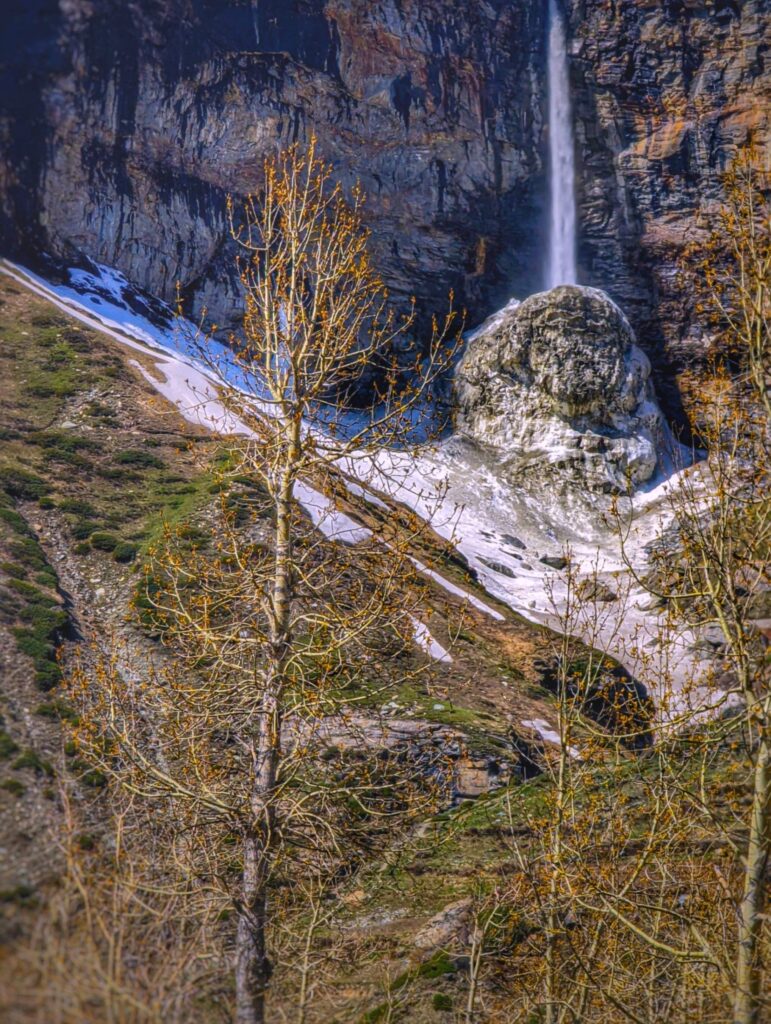
Essential Travel Tips for Visiting Sissu Village in Himalayas
Before you pack for travel, there are some important things to know about visiting this high-altitude paradise:
1. Choose the Right Season
Best Time: Late April to October is ideal for visiting Sissu, when the weather is pleasant and most roads are open.
Winter Trips: During winter (December to February), expect heavy snow. Unless you’re specifically seeking a snow-bound adventure, visiting in the colder months may restrict your movement and access to certain areas, as roads may be blocked.
Avoid Monsoons: From July to early September, rain can make travel and trekking difficult due to landslides and slippery roads.
2. Getting There: The Atal Tunnel Route
By Road: This place is now just 40 minutes from Manali, thanks to the Atal Tunnel.
Motorcycle Rentals: Many motorcycle rentals are available in Kullu and Manali, making it easy to find a vehicle for your trip.
Plan for the Road Trip: The drive is scenic, but unpredictable traffic is common, especially during weekends or public holidays.
3. Accommodation Options
Day Trip Possibility: You can return to Manali after a day trip to Sissu.
Homestays: If you prefer to stay overnight, Sissu has several cozy homestays that offer an authentic local experience, including home-cooked meals. Don’t expect luxury accommodations in these remote mountains.
4. Stay Options
Yangling House
Grease Moto Club
La Hault
Zostel Sissu
5. Altitude Awareness: Take It Easy on Arrival
Altitude Acclimatization: Sissu sits at a high altitude (around 10,000 feet above sea level). To acclimatize, drink plenty of water and travel slowly.
6. Stay Connected with Offline Maps
Limited Connectivity: Download maps for offline use, as connectivity is limited.
7. Dress in Layers for Unpredictable Weather
Layered Clothing: Temperatures in the mountains fluctuate throughout the day, so pack clothes you can layer, including a warm jacket, as it can get chilly even in summer.
Sturdy Footwear: Comfortable hiking shoes are essential for navigating uneven paths and trails.
8. Plan for Limited Dining Options
Simple Yet Tasty Meals: Most food options in Sissu are basic, with family-owned cafes and small eateries serving local Himachali and Tibetan cuisine.
Try the Local Cuisine: Siddu, a steamed bread with fillings, is a must-try.
9. Respect Local Customs and Culture
Friendly Greetings: The locals here are warm and welcoming, and a simple smile goes a long way in making a connection.
Sacred Sites: Many areas hold religious significance. Remove your shoes at monasteries and be mindful of local customs.
10. Keep Nature Pristine: Leave No Trace
Trash Disposal: Waste disposal facilities in Sissu are limited, so carry your trash with you and dispose of it responsibly.
11. Limited Fuel Availability
Fuel Up in Manali: Fill up your tank in Manali, as there are few petrol pumps along this route.
12. Stay Alert to Weather Conditions
Check the Forecast: Mountain weather can change rapidly, so stay updated on forecasts, especially if you plan to trek or drive around.
Emergency Kit: Pack essentials like a flashlight, power bank, and raincoat. Winter visitors should also carry snow chains if driving.
13. Avoid Driving at Night
Daytime Travel Only: Driving at night can be dangerous in barren and remote valleys like Lahaul. Ensure you travel during the day for safety.
14. Stay Flexible and Enjoy the Moment
Patience is Key: Mountain travel can lead to occasional delays due to weather or road conditions.
Take It Slow: Embrace the peaceful pace of village life, savor each moment, and let Sissu’s calm charm work its magic on you.
Ready to fall in love with this slice of heaven?
With these travel tips, you’ll be well-prepared to make the most of your visit. If you have further questions, please don’t hesitate to ask in the comments.
This place is a hidden treasure for those seeking a quieter, more authentic Himalayan experience. This wonderland is waiting to be explored. Sissu is calling you! Will you answer?


[…] If you have liked this blog on Shoja, you would also love to check out blog based on an another Himachali hamlet of Sissu. […]